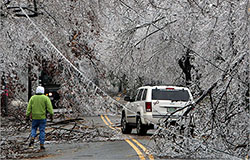What is carbon monoxide?
Carbon monoxide is an odorless, colorless and toxic gas. Because it is impossible to see, taste or smell the toxic fumes, CO can kill you before you are aware it is in your home. At lower levels of exposure, CO causes mild effects that are often mistaken for the flu. These symptoms include headaches, dizziness, disorientation, nausea and fatigue. The effects of CO exposure can vary greatly from person to person depending on age, overall health and the concentration and length of exposure.
Where does carbon monoxide come from?
CO gas can come from several sources: gas-fired appliances, charcoal grills, wood-burning furnaces or fireplaces and motor vehicles. Who is at risk? Everyone is at risk for CO poisoning. Medical experts believe that unborn babies, infants, children, senior citizens and people with heart or lung problems are at even greater risk for CO poisoning.
What do I need to do if the Carbon Monoxide Alarm goes of?
If your carbon monoxide alarm goes off depends on whether anyone is feeling ill or not.
If no one is feeling ill:
- Silence the alarm.
- Turn off all appliances and sources of combustion (i.e. furnace and fireplace).
- Ventilate the house with fresh air by opening doors and windows.
- Call a qualified professional to investigate the source of the possible CO buildup.
If illness is a factor:
- Evacuate all occupants immediately.
- Determine how many occupants are ill and determine their symptoms.
- Call your local emergency number and when relaying information to the dispatcher, include the number of people feeling ill.
- Do not re-enter the home without the approval of a fire department representative.
- Call a qualified professional to repair the source of the CO.










